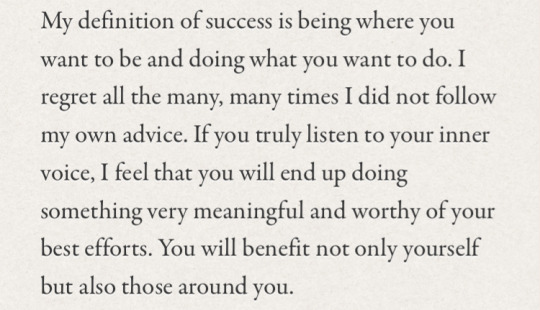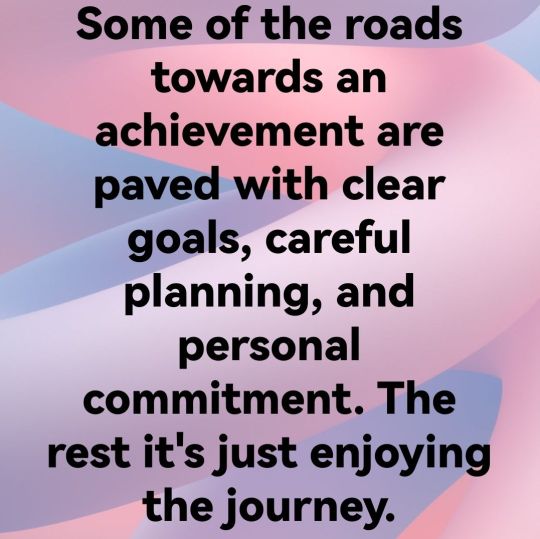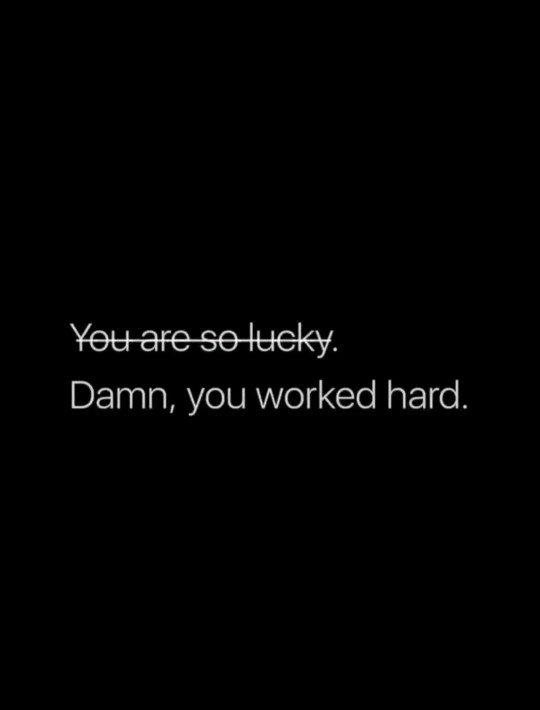#Achieve your goals
Text
I MANIFESTED ROSY CHEEKS • IT WAS SO EASY
Now, I'll be honest. My old self back then had a hard time living in the end. But, I was like "What do I have to lose?"
A few days ago, I've seen girls around me and on social media with rosy cheeks. Of course I was jealous. I wanted rosy cheeks. Of course I wasn't sad about it. I knew I could get them- Without makeup.
I didn't even listen to subliminals. I didn't affirm throughout the day 10X or whatever. ALL I DID WAS LIVE IN THE END. That's it! Yeah, the mirror showed the opposite. But I didn't care. Whenever it would pop up in my mind I would say, "I have rosy cheeks. I am so grateful." And guess what? Just like every human on this Earth, I doubted. That little part inside me said "You don't have rosy cheeks. This stuff isn't real." But I PUSHED those thoughts aside and reaffirmed the opposite. About 3 days later. I look in the mirror ( Not for the rosy cheeks just because I wanted to ) And BOOM. I had them. Every human has some rosy-ness to their cheeks but I wanted mine to be noticable. They were SUPER noticable. Guys, it's so easy than you make it out to be.
All you have to do is live in the 4D. Who cares about the 3D? It'll catch up in it's own time. Don't think it's yours. KNOW it's yours.

#manifesting#law of assumption#law of manifestation#i did it#you can too#belief#affirmations#believe#achieve your goals#kawaii
538 notes
·
View notes
Text

#love#positive#motivation#strong#positive life#positive mental attitude#get motivated#mindfulness#point of view#dailywomen#achieve your goals#achieve success#motivating quotes
9 notes
·
View notes
Text
If you're too lost to say anything,I'll be quiet with you and stroke your hairs in my lap if that helps
#aesthetic#books & libraries#moodboard#academicism#dark academism#dark acamedia#art#museums#quotes#cottagecore#love letters#i love you#lovers#love language#love#love quotes#academia aesthetic#classic academia#art academia#achieve your goals#academic#dark academia#dark acadamia aesthetic#dark academia moodboard#dark academia quotes#grey academia#light academia#chaotic academia#romance books#booklover
12 notes
·
View notes
Text

4 notes
·
View notes
Text
Maximizing Credit Card Use for Financial Goals

Welcome back to our series on credit cards and personal finance! In the previous article, we explored the fundamentals of responsible credit card use and how to choose the right card for your needs. Now, we’re diving deeper into credit cards to help you leverage them for your financial goals. Whether you’re looking to build credit, earn rewards, or manage your expenses more effectively, this article is your guide to getting the most out of your plastic companion.
Have you ever wondered how to turn your credit card into a powerful tool for achieving financial success? The answer lies in strategic and responsible credit card usage. Let’s explore how you can leverage your card for various financial goals.
Building and Improving Credit with Credit Cards
Building and improving your credit score is like laying a strong foundation for your financial future. Your credit score influences the interest rates you’ll receive on loans and credit cards, affecting your ability to buy a home, finance a car, or even secure a job. Your credit card can be a key player in building and improving your credit score. By using it responsibly through making on-time payments and keeping balances low, you establish a positive credit history. If you’re new to credit or rebuilding your score, consider secured credit cards or credit builder loans to get started.
Here’s how to use your credit card to boost your creditworthiness:
Responsible Credit Card Use
The foundation of a good credit score is responsible credit card usage. Pay your credit card bills on time, every time. Timely payments contribute significantly to your payment history, one of the most crucial factors in your credit score. Set up automatic payments to ensure you never miss a due date.
Keep Balances Low
High credit card balances relative to your credit limit can negatively impact your credit score. Aim to keep your credit utilization ratio below 30%. For example, if your credit limit is $10,000, try to maintain a balance of $3,000 or less. This shows lenders that you’re responsible with credit.
Diversify Your Credit Mix
A mix of credit types can also work in your favor. In addition to credit cards, consider having installment loans (e.g., a car loan) in your credit history. A diverse mix demonstrates your ability to manage various types of credit.
Avoid Opening Too Many Accounts at Once
Each time you apply for credit, it results in a hard inquiry on your credit report, which can temporarily lower your score. Be selective when opening new credit card accounts and avoid a flurry of applications in a short period.
By mastering these credit-building strategies, you’ll not only elevate your credit score but also enhance your financial standing. A strong credit profile opens doors to better financial opportunities and lower borrowing costs.
Earning Rewards and Cashback with Credit Cards
One of the most enticing aspects of credit card ownership is the potential to earn rewards or cashback on your spending. Who doesn’t love the idea of being rewarded for their spending? To make the most of this, select a credit card that aligns with your spending habits. If you’re a frequent traveler, a travel rewards card might be the best option. For everyday expenses, cashback cards can put money back in your pocket. Additionally, keep an eye out for sign-up bonuses — these can provide a significant boost to your rewards balance. By leveraging your credit card for these purposes, you’re not only working towards your financial goals but also getting the most out of your credit card’s potential.
Credit cards offer an array of rewards, from cashback on everyday purchases to travel points that can whisk you away on exciting adventures. Let’s explore how to make the most of these perks:
Match Rewards to Your Lifestyle
The key to maximizing rewards is to match the right card to your lifestyle. If you’re a frequent traveler, consider a travel rewards card that offers bonus miles or hotel stays. For those who prefer simplicity, cashback cards provide straightforward rewards on everyday spending.
Sign-Up Bonuses
Don’t underestimate the power of sign-up bonuses. Many credit cards offer substantial bonuses when you meet a minimum spending requirement within the first few months. These bonuses can kickstart your rewards earnings.
Strategic Spending
Take a close look at your spending habits and leverage cards that offer the most rewards in your primary spending categories. For instance, if you spend heavily on groceries, choose a card with a high cashback rate in that category.
Supplementary Benefits
Beyond rewards, credit cards often come with supplementary benefits like purchase protection, extended warranties, rental car insurance, and airport lounge access. Familiarize yourself with these perks and use them to your advantage.
Remember, the key to successful rewards earning is to pay your credit card balance in full each month. Carrying a balance and incurring interest can quickly negate the value of your rewards.
Taking Advantage of Interest-Free Periods
Credit cards often come an interest-free period on purchases which is an enticing feature. During this period, you can make purchases without incurring any interest charges, provided you pay the balance in full by the due date. Here’s how to make the most of this perk:
Planned Purchases
If you have significant expenses on the horizon, such as home improvements or medical bills, consider using a credit card with a 0% APR introductory offer on purchases. This allows you to spread the cost over several months without accruing interest, making larger expenses more manageable.
Balance Transfers
Some credit cards also offer 0% APR introductory periods on balance transfers. If you have existing credit card debt with high-interest rates, transferring it to a card with a 0% APR can save you money on interest and help you pay down the debt faster.
Responsible Payment
While the interest-free period provides breathing room, remember that it’s crucial to pay off the balance before the promotional period ends. Missing this deadline can result in retroactive interest charges, which can be financially burdensome.
Automating Payments and Savings
Automation is a powerful ally in managing your credit card accounts and financial goals:
Auto-Pay Minimum
To avoid late fees and penalties, set up automatic payments to cover at least the minimum payment due each month. This ensures that you never miss a payment deadline.
Auto-Pay Full Balance
For optimal financial practice, consider setting up auto-pay to cover the full credit card balance each month. By doing so, you avoid interest charges altogether, and your credit score benefits from consistent, on-time payments.
Auto-Transfer to Savings
If your credit card rewards come in the form of cashback, consider automating transfers of your earnings into a savings account or towards specific financial goals. This effortless saving can gradually help you achieve your financial goals.
Maintaining a Low Credit Utilization Ratio
Your credit utilization ratio, which is the percentage of your available credit you’re using, plays a significant role in your credit score. Keeping this ratio low can positively impact your creditworthiness:
Pay Balances in Full
Aim to pay your credit card balances in full each month. By doing so, you not only avoid interest charges but also maintain a low credit utilization ratio.
Request Credit Limit Increases
If you’ve been a responsible credit card user, consider requesting a credit limit increase from your card issuer. A higher credit limit can automatically reduce your utilization ratio if you don’t increase your spending.
Monitor Credit Utilization
Regularly monitor your credit utilization ratio and make adjustments as needed. If you notice your ratio creeping up, consider reducing your credit card spending or making an extra payment mid-cycle to keep it in check.
By implementing these strategies, you’ll not only maximize the benefits of your credit cards but also strengthen your financial foundation. These practices promote responsible credit card use and financial discipline, essential elements of long-term financial success.
Conclusion
In this article, we’ve explored credit card strategies that can help you achieve your financial goals. From building and improving credit to earning rewards and leveraging interest-free periods, each strategy is a valuable tool in your financial toolkit. Remember that responsible credit card use is key to reaping the benefits while avoiding common pitfalls. In the next article, we will look into even more advanced credit card techniques and explore how to take your financial journey to the next level. Stay tuned for our continued exploration of credit card mastery and financial success!
Follow our Instagram account for your daily dose of fun and inspiration!!
Looking for a productivity tool that can help you achieve goals, set budget, and be more productive? Come learn about Illumtori!
#100 days of productivity#self improvement#goals#personal growth#productivity#personal development#inspiration#motivation#achieve your goals#finance
3 notes
·
View notes
Text
You Are The Key To Everything
March 26th, 2024
Whatever it is that causes you pain, blesses you. If all you can see is darkness, find the light. Seek for it. I’m sure there will be other people who will help you in finding it. People who want what is best for you when you’re going through difficult times in your life.
Failure is the key to having a meaningful and successful life. With failure you will develop qualities in you that are not present yet and you will gain these qualities. They will be more developed as time goes by. All successful people had failures and these failures didn’t hinder them from achieving their goals. They became their stepping stones to reach their dreams.
When you are anxious or worried, be patient. Learn to wait… For everything. Patience is a virtue and having patience leads to a happy and contented life.
You are the key to everything that will open a new perspective. One that you haven’t seen that will make your life worth living.
Always remember that in every step you take, God is walking beside you. When all else fails, God will never leave you. He will always have your back. Keep your faith in Him and always walk with faith in God. I’m ending this article with a quote I’ve read on Pinterest: “And once the storm is over, you won’t remember how you managed to survive. You won’t even be sure, whether the storm is really over. But one thing is certain. When you come out of the storm, you won’t be the same person who walked in. That’s what this storm is all about. ~ Haruki Murakami”.

#Silence Speaks When Words Cant#Nightingale At Dawn Writes#Artsy Ally LB#Blog#Blogger#Personal Blog#Deep Thoughts#Inspirational Words#Motivational Words#Life#Pain Blesses You#Find The Light#Difficult Times#Failure#Key#Meaningful Life#Successful Life#Personal Growth#Personal Development#Achieve Your Goals#Stepping Stones#Reach Your Dreams#Be Patient#Patience Is A Virtue#Happy Life#Contented Life#You Are The Key To Everything#New Perspective#Life Worth Living#God Has Your Back
2 notes
·
View notes
Text
💜My goals for 2024💜
Consume less;
Produce as little waste as possible;
Travel;
See lots of live music!
Attend some types of art classes: ceramics, mending, knitting
Put together a reading list;
Change job;
Give more to others and be less self-centered;
Practice Buddhism more;
Reach £6.500 in savings;
(list in progress)
❤️: work harder!! x
🧡: getting there
💛: not yet happening
💚: achieved!
#list#reading list#newyear2024#new years resolution#achieve your goals#set goals#new year 2024#life goals#motivation#inspirational
2 notes
·
View notes
Text

January Goal Update
1. Whole Food 80/20: this one was definitely a hard start. January was very busy at the beginning and my routine was constantly thrown off. But I started getting acid reflux symptoms again and so honestly eating healthy and whole food has become a necessity more than a choice so I don’t get terrible nausea all day
2. Hygiene: I’ve been enjoying this goal. My hair is looking healthier after I got back on track with taking care of it and also figuring out what products work the best. I found a sale on makeup products so I’ve been enjoying doing my makeup on school days. I bought a new fragrance that’s more my style. And my skin has been clearing up.
3. Flashcards: I’m about halfway there with this one. I have been reviewing content, but it’s difficult when I’m also trying to learn new content. I have some amazing study decks on ECG’s and drugs right now.
4. Language Learning: I have been keeping up with Duolingo, and my friend sent me a music playlist full of slow Spanish songs. But I’m always so tired when I come home, it’s hard to speak Spanish with my husband. I have been occasionally talking to my suegra in Spanish though.
5. Study Whole Heartedly: Right now I am in my “thirst for knowledge” phase of the semester. I’m rested from my break and I’m amazed I have the opportunity to learn medicine. But I’ve learned in med school that you can’t delve down every rabbit hole, especially your first year. Looking up every syndrome you come across and spending time memorizing it will fill you brain up with the little details before you grasp the big picture stuff that you need your first year. I’m working on striking a balance between the two so I can continue feeding my curiosity while allocating the right amount of time to my coursework and keep myself from burning out.
6. Climbing: This has been a bit of a bust. Beginning of January I was climbing or hiking every day until my knees started hurting and I didn’t rest like I should have. But now I’ve had to take about a week off of hiking and almost two weeks off of climbing. But today I’m going to try again and see how my body feels. We still have another 11 days of the month
7. Meditation: I haven’t kept to meditating or yoga recently. Yoga was also painful with my knees and I don’t like sitting out on too many positions so I made a habit of doing yoga poses at home. I do feel I’ve been more mindful lately and overall I’ve been able to keep my stress and preoccupied tendencies down.
8. Reading: I’ve gotten out of the habit of reading when school started (now I read textbooks before bed) so I think 3 books is a high expectation. I think I can read 2.
#self improvement#growth#self healing#mindset#journal#self love#studyblr#that girl#med student#achieve your goals#2024 goals#goal setting#medical school#medblr
3 notes
·
View notes
Text
Road to achievement
Some of the roads towards an achievement are paved with clear goals, careful planning, and personal commitment. The rest it’s just enjoying the journey.
Remember to check my book “Free to Achieve“, available on Amazon.

View On WordPress
#achieve your goals#commitment#Free to Achieve#Goal#Grow#Growth#Journey#Plan#planing#QOTD#quote#Quote Of The Day#Raffaello Palandri
2 notes
·
View notes
Text
Honest Thoughts:
If only my kid self, who was so shy and timid with big dreams, could see me now.
#growth#reflection#deep reflection#positive thoughts#you can do it#change is possible#achieve your goals#make yourself proud#achieve your dreams#writers#writing#writer life#be happy#honest thoughts#treat yourself#enjoy the little things#anything is possible#love yourself
2 notes
·
View notes
Text
How Should we Deal With Fear And Limits to Achieve our Goals And Dreams?

Desire and fear are both natural human emotions. Fear can serve as a warning system and help us avoid harm if we are aware of potential dangers. When fear overwhelms us and prevents us from taking action toward our goals and dreams, it can be harmful. To overcome fear and achieve our goals and dreams, it can be helpful to:
Identify the source of the fear: Understanding the root cause of our fear can help us address it more effectively.
Challenge our fears: It's imperative to question whether our fears are rational and grounded in reality, or if they are based on assumptions and beliefs that may not be true.
Take small steps: Starting with small, manageable tasks can help build confidence and momentum.
Seek support: Talking to friends, family, or a therapist can provide valuable perspective and guidance.
Desire, on the other hand, can be a powerful motivator. To achieve our goals and dreams, it's imperative to:
Set clear and specific goals: Having a clear idea of what we want to achieve can help us stay motivated and focused.
Make a plan: Break larger goals down into smaller, more manageable tasks and create a plan of action.
Take action: Consistently taking steps towards our goals, no matter how small, can help us make progress.
Stay flexible: Be open to new opportunities and be ready to adapt our plan as needed.
In the end, dealing with fear and desire is a personal journey, and what works for one person may not work for another. We must find a balance between the two and avoid letting fear stop us from pursuing our dreams.
#fear#fear of failure#fear of emotions#desire#follow your dreams#childhood dreams#achieve success#achieve goals#achieveyourgoals#achieve your dreams#achieve your goals
19 notes
·
View notes
Text
Who's Worth Your Kindness
Not everyone will appreciate what you do for them. You have to figure out who's worth your kindness and who's just taking advantage of you.
Visit my Youtube channel!
#motivational quotes#motivational videos#daily motivational videos#achieve your goals#self improvement#self help#self development#motivational#deep facts#friendship#relationship#relationships#love advice#love#love relationship
2 notes
·
View notes
Text
Feedback Loops: The Power of Reflecting on Your Productivity Habits

Have you ever set ambitious goals, brimming with excitement, only to find yourself slipping into old habits a few weeks later. It is a tale as old as time, trying to juggle personal growth with the demands of a fast-paced life. But what if there was a way to constantly make sure we are always on the right track? Enter the feedback loop — an essential tool for those wanting to supercharge their productivity journey. This article sheds light on the magic of feedback loops, and why everyone aiming for success should embrace them.
Understanding Feedback Loops
What is a Feedback Loop?
In simple terms, a feedback loop is a process where the results of an action are used to modify future actions. Think of it like adjusting the volume on your headphones. You press play on a new song, it starts too loudly, so you adjust the volume down. Your action (playing the song) gave you a result (too loud) and you modified your future action (adjusted the volume) based on that feedback.
Positive vs. Negative Feedback Loops
Not all feedback loops are created equal. There are positive and negative feedback loops. A positive feedback loop reinforces a given behavior. For instance, you feel a rush of accomplishment when you complete a task, and are motivated to tackle the next one. This positive feeling and success fuels more positive actions and success.
On the flip side, negative feedback loops work in the opposite direction. Let’s say you procrastinate on a task, leading you to feel guilty. This guilt makes you avoid the task further, leading to more procrastination. It is a downward spiral, and we have all been trapped by it at some point.
Feedback Loops in Everyday Life
These loops are not limited to productivity; they are everywhere. Remember the last time you tried a new recipe, and it turned out too salty? The next time, you probably used less salt. That is a feedback loop in action.
The Role of Feedback Loops in Productivity
Why Feedback Loops are Essential for Growth
Imagine setting out on a road trip without a GPS or map. While the spirit of adventure might be exhilarating at first, the thrill will likely wear off when you find yourself lost. Similarly, our journey towards productivity requires periodic check-ins. These moments of reflection ensure we are heading in the right direction. Feedback loops act as our productivity GPS, guiding us and providing critical adjustments along the way.
Continuous Improvement and Adaptation
The world around us is constantly evolving, especially in the age of technology and innovation. Our goals, environments, and aspirations can change rapidly. By implementing feedback loops in our routines and intentional checkpoints, we can evolve with our shifting landscapes, ensuring that we remain adaptive and resilient.
The Power of Self-Awareness
At the heart of every feedback loop is a moment of self-awareness. When we take a step back to analyze our actions, behaviors, and habits, we empower ourselves to make informed decisions. For the generation that grew up with instant feedback through likes, comments, and shares on social media, translating this into personal productivity can be a game-changer. We transform from passive participants of our lives to active architects of our futures.
Implementing Personal Feedback Loops
Start Small, Think Big
Initiating a personal feedback loop doesn’t mean overhauling your entire routine overnight. Begin by picking one habit or task you want to improve. For example, if you are trying to become a morning person, reflect each day on what helped or hindered that goal. Did you watch too much tv last night? Or perhaps that new meditation app did wonders?
Consistency is Key
A feedback loop only works if it is used consistently. While it is tempting to skip a day or two, especially when things aren’t going well, that is when feedback is most vital. To make it a seamless part of your daily routine, consider setting aside a dedicated time each day — maybe five minutes before bed or during your morning coffee — to reflect.
Pitfalls of Ignoring Feedback
The Trap of Complacency
One of the biggest adversaries we face on our productivity journey is complacency. There is comfort in routine, even if it is not particularly efficient or fulfilling. Ignoring feedback from our actions and results can lead to stagnation. Without intentional course corrections, we can remain stuck in counterproductive habits, leading us to wish for different outcomes while engaging in counterproductive habits.
The Snowball Effect of Negative Loops
As mentioned before, negative feedback loops can spiral out of control if left unchecked. Procrastinating on a task might lead to feelings of guilt, which further demotivates us. Without the awareness and action steps that feedback provides, this cycle can expand to other areas of our life, turning small challenges into seemingly insurmountable obstacles.
Lost Opportunities and Potential
The costs of ignoring feedback aren’t just about maintaining the status quo. Every time we miss an opportunity to refine our approach, we also miss potential growth moments. In an age bursting with opportunities, this can mean overlooked chances to learn, connect, and thrive.
Tips for Effective Feedback Loop Implementation
Be Specific in Your Reflection
While “I didn’t do well today” is a start, it is far more helpful to identify specifics of what did not go well and come up with ideas and actions on how to overcome the problem. Was it that afternoon energy slump? Or perhaps a distracting environment? The more specific your feedback, the more actionable your next steps.
Embrace Both Positive and Negative Feedback
It is tempting to only focus on what went wrong, but recognizing what went right is equally important. Celebrate the small wins. If a particular strategy or habit is serving you well, take note and consider how you can integrate it more into your routine.
Stay Open-Minded
Feedback can sometimes be tough to swallow, especially if it challenges our self-perception or deeply ingrained habits. Approach feedback with an open mind. Remember, it is all for the purpose of growth.
The Broader Picture: Feedback Loops in Team and Organizational Settings
Feedback Loops Beyond the Individual
While personal feedback loops are transformative, the concept scales beyond individual growth. Teams, startups, and even large organizations thrive when feedback loops are ingrained in their culture.
Creating a Feedback-Friendly Culture
Fostering a feedback-rich environment can skyrocket collective productivity. This involves regular check-ins, open communication channels, and an atmosphere where constructive criticism is welcomed and acted upon.
Conclusion
Feedback loops can be powerful allies. They are not about relentless optimization or self-criticism. Instead, they are about self-awareness, growth, and continuously aligning with our ever-evolving goals. Whether you are embarking on a personal project, career journey, or collaborative endeavor, remember the power of reflection and adaptation. Embrace feedback loops, and watch as they unlock doors to productivity and fulfillment.
Follow our Instagram account for your daily dose of fun and inspiration!
Looking for a productivity tool that can help you achieve goals, set budget, and be more productive? Come learn about Illumtori!
#self improvement#100 days of productivity#goals#personal growth#personal development#productivity#achieve your goals#good habits#habits
3 notes
·
View notes
Text

❤
15 notes
·
View notes
Text
January Goals ❄️
Whole Foods 80/20: I’ve been using the app Lifesum and I like it. I’m trying to keep up my intake of a variety of foods. I want to focus on adding habits.
Hygiene: I want to put full effort into my morning and evening routine. Doing my whole skincare routine, cleaning up my brows, matching my outfits.
Do Flashcards: I want to be sure I’m reviewing old content, and practicing for my boards, also I’m adding flashcards about common drugs
Language Learning: It’s time to step it up with Spanish. I’m going to do Duolingo again but also I want to start watching TV in Spanish and speaking with my husband.
Study Whole Heartedly: There is no time to waste anymore. This semester is going to be on a tight schedule and I need to make sure my study time is efficient. I’m going to continually check in to make sure if I’m spending time on content it’s preparing me for understanding and taking exams
Climbing: I’ve realized I really enjoy climbing and I’m going to try to go 2-3 times a week. My focus is on flagging, smearing and hip movement this month. I feel good with smearing but I don’t flag as often as I should.
Meditate: I’ll be doing yoga 1-2 times a week. These classes end with a meditation but I also would like to meditate at home every day. I am also going to try different ways to practice mindfulness in daily life.
Read: My goal is to read 3 books by the end of January. I hope reading before bed and listening to audiobooks will help.

#self improvement#growth#self healing#mindset#journal#self love#that girl#studyblr#med student#new year#new me#productivity#achieve your goals
1 note
·
View note
Text
I love all my pianists and their scoliosis.

#aesthetic#books & libraries#moodboard#academicism#dark academism#dark acamedia#art#museums#quotes#cottagecore#academia aesthetic#classic academia#art academia#academic#dark academia#dark acadamia aesthetic#dark academia moodboard#achieve your goals#dark academia quotes#grey academia#light academia#piano#pianist#scoliosis#romance books#darkcore#haha funy#funny jokes#funnyshit#funny
3 notes
·
View notes